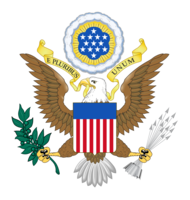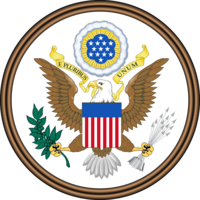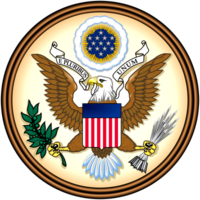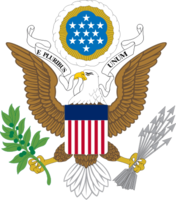In this usa gerb page you can download free usa gerb PNG images: usa gerb PNG images free download
In this gallery of usa gerb, we have 33 free PNG images with transparent background.
he Great Seal of the United States is used to authenticate certain documents issued by the federal government of the United States. The phrase is used both for the physical seal itself, which is kept by the United States Secretary of State, and more generally for the design impressed upon it. The Great Seal was first used publicly in 1782.
The obverse of the Great Seal is used as the national coat of arms of the United States. It is officially used on documents such as United States passports, military insignia, embassy placards, and various flags. As a coat of arms, the design has official colors; the physical Great Seal itself, as affixed to paper, is monochrome.
Since 1935, both sides of the Great Seal have appeared on the reverse of the one-dollar bill. The Seal of the President of the United States is directly based on the Great Seal, and its elements are used in numerous government agency and state seals.
The design on the obverse (or front) of the seal is the coat of arms of the United States. The shield, though sometimes drawn incorrectly, has two main differences from the American flag. First, it has no stars on the blue chief (though other arms based on it do: the chief of the arms of the United States Senate may show 13 or 50, and the shield of the 9/11 Commission has, sometimes, 50 mullets on the chief). Second, unlike the American flag, the outermost stripes are white, not red; so as not to violate the heraldic rule of tincture.
The supporter of the shield is a bald eagle with its wings outstretched (or "displayed", in heraldic terms). From the eagle's perspective, it holds a bundle of 13 arrows in its left talon (referring to the 13 original states), and an olive branch in its right talon, together symbolizing that the United States has "a strong desire for peace, but will always be ready for war." (see Olive Branch Petition). Although not specified by law, the olive branch is usually depicted with 13 leaves and 13 olives, again representing the 13 original states. The eagle has its head turned towards the olive branch, on its right side, said to symbolize a preference for peace. In its beak, the eagle clutches a scroll with the motto E pluribus unum ("Out of Many, One"). Over its head there appears a "glory" with 13 mullets (stars) on a blue field.
The 1782 resolution of Congress adopting the arms, still in force, legally blazoned the shield as "Paleways of 13 pieces, argent and gules; a chief, azure." As the designers recognized, this is a technically incorrect blazon under traditional English heraldic rules, since in English practice a vertically striped shield would be described as "paly", not "paleways", and it would not have had an odd number of stripes. A more technically proper blazon would have been argent, six pallets gules ... (six red stripes on a white field), but the phrase used was chosen to preserve the reference to the 13 original states.











